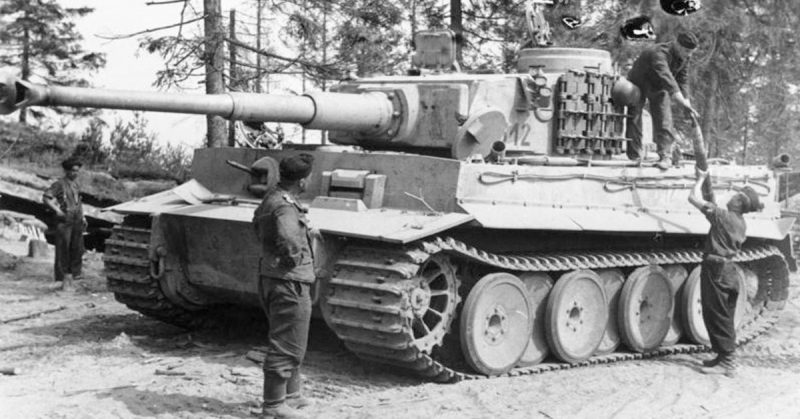War History Online presents this guest blog by Evan Pinter
In this three-part series, we will take a look at the three most decorated panzer companies in the entire Wehrmacht during WWII, as well as the men who fought in them. First off will be the most decorated Heer Tiger company, Carius’s unit, the 2./s.Pz.Abt. 502. This is not an effort towards any glorification or veneration of the politics that drove the German war effort, instead it is intended to be read as an exposition of the best that the German Panzerwaffe had to offer, as military history first and foremost.
Overview
Though the 502nd Heavy Tank Battalion was the first operational Heer Tiger tank unit, it was not until the spring of 1943 that the 2nd company of the battalion was formed. Nonetheless it quickly drew in a number of very skilled tank commanders.
From its formation until the end of the war it fought on the northern sector of the eastern front, from Leningrad back through Narva, the Baltic states and finally East Prussia.
During this time it claimed a very sizeable share of the 1400 tanks and 2000 AT guns that were claimed by the battalion by war’s end, as well as producing a number of the best armour commanders in the German army.
Commanders
Otto Carius
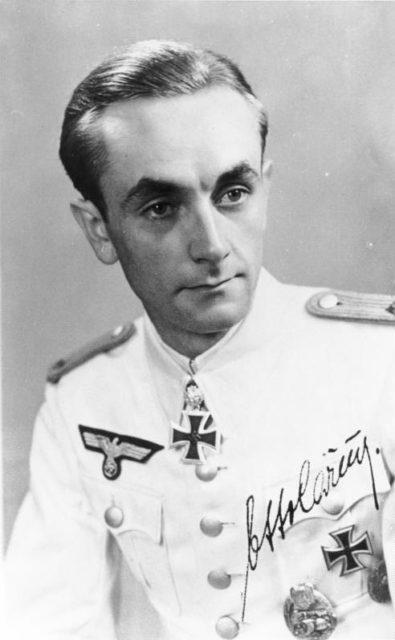
Otto Carius was one of most distinguished and probably the most well-known Heer Tiger commander of the war. He fought with the 502nd from mid-1943 up until his being heavily wounded in mid-1944, when he was shot a total of seven(!) times. During that time he received the Knight’s Cross for his defensive successes near Narva where the five Tigers under his command destroyed 28 tanks in three days.
He also became one of the youngest Oakleaves recipients for his actions at the village of Malinava, where in an action not dissimilar to Wittmann’s rampage at Villers-Bocage he and his wingman Albert Kerscher destroyed 14 Soviet tanks (including several heavy ‘Josef Stalin’ tanks) in an armoured charge. Carius survived the war and passed away quietly in 2015. Though often credited with destroying 150+ tanks for whatever reason, Carius himself has stated that his true total was probably about 100-110 at most, which is even so a respectable amount.
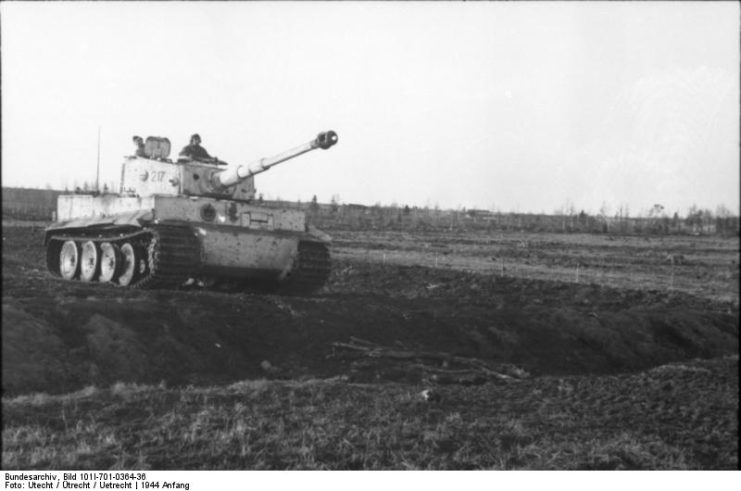
Albert Kerscher
Kerscher was another distinguished member of the 502nd and Carius’s right-hand man until mid-1944. He received the Knight’s Cross for his successes alongside the other men of 2nd company during late July of 1944, when many Soviet tanks were destroyed. He was fighting in the same company in early 1945, when on the 13th/14th of April (depending on the source) Kerscher and fellow Tiger commander sergeant Baresch faced off against a Soviet tank attack near Norgau. They were able to destroy 50 tanks, with Kerscher claiming 32.
Later, on 21 April, Kerscher was charged with the defense of the Neuhäusel forest. On this day Kerscher’s hodgepodge of forces (one Tiger, one King Tiger, two Hetzers and an AT gun) were able to destroy 21 Soviet tanks. For these actions, he was recommended for the Oakleaves, but never officially received it in the chaos of the war’s final days. Over the course of his career, he destroyed over 100 tanks.
Heinz Krämer
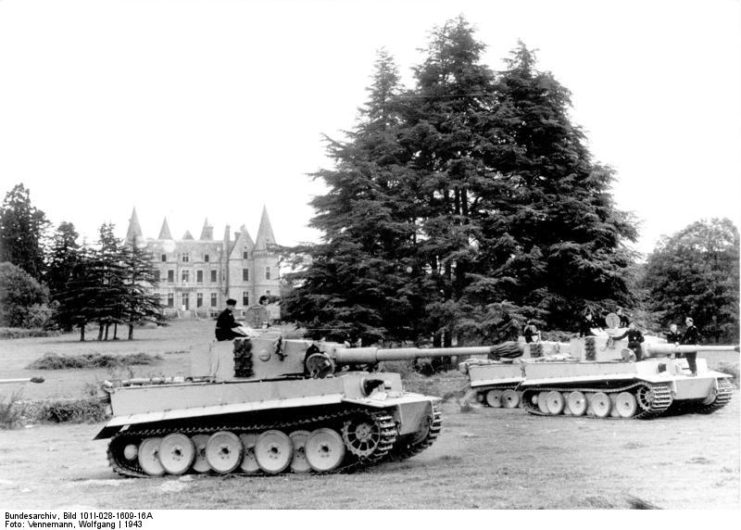
Krämer was Carius’s gunner and fought with him in many tough battles. Over the course of his career he was able to destroy over 50 tanks as well as achieving the singular feat of shooting down a Soviet aircraft in mid-flight with the Tiger’s main gun! For his achievements in battle he became one of the small number of tank gunners to be awarded the Knight’s Cross, but unfortunately was killed in battle in late 1944.
Alfredo Carpaneto
Carpaneto was one of the most unusual Tiger commanders in the company. Born in Italy, he decided to join the Wehrmacht when Italy chose to remain neutral at the outbreak of the war. Thanks to his good German, he was accepted as a volunteer and fought first with the 2nd Panzer division, and later the 502nd. He would remain with this unit for the rest of his life, racking up some notable successes.
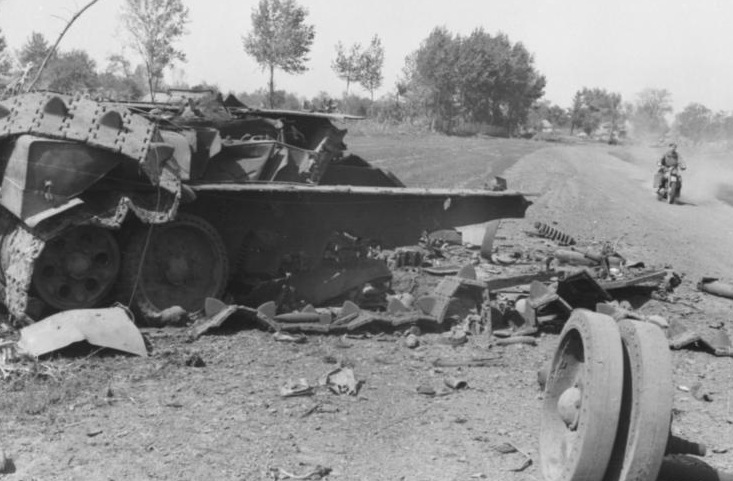
On 26 January 1945, he ambushed a Soviet column, destroying 4 tanks, but was forced to pull back due to being outnumbered. On the way back to his own lines his tank broke through the ice and sunk 1.2 meters deep in a pond. However, with the turret turned 180 degrees to the rear, Carpaneto was able to fight off his pursuers and destroy 8 more Soviet tanks. But unfortunately by the time he got out the Soviets were one step ahead, and his tank was destroyed by a group of JS-2’s. He was awarded the Knight’s Cross posthumously. By that time he was credited with about 50 tank kills, which to my knowledge makes him the best non-German panzer ace in the Wehrmacht.
Kurt Göring
Kurt Göring (who had no connections to the infamous Hermann Göring) was another one of the successful tank commanders in the company. More than any of the others his efforts stretched over the long run of the company’s existence, where he served from the beginning until his being wounded just before the war’s end. Among his achievements were his receiving the German Cross in Gold as well as the rare Panzer Badge “100”, which recognized his participation in over 100 armoured engagements. His final total was 56 tanks, with the highest number on a single day being the 11th of April 1944, when he destroyed 13 on that day alone.
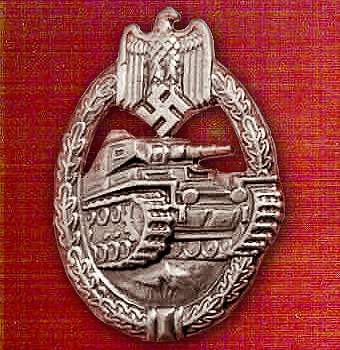
References
The best chronicle of the battles of the company up until mid-1944 comes from the famous memoirs of Otto Carius, Tigers in the Mud. It is a fine personal account of this hard-fighting unit with plenty of interesting primary material as well. Past that the record is a bit sketchier, but a relatively decent summary can be found in Wolfgang Schneider’s account of the battalion in his Tigers in Combat Vol. 1.
Author: Evan Pinter
Coming soon: “13th (heavy) Company, SS-Panzer-Regiment 1”
